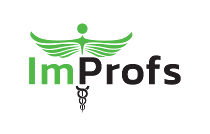Old school software development
Old-school software development still has its place in the modern IT world, despite the emergence of new methods such as Agile, Scrum and Lean. This is because some clients still prefer the traditional approach because of a sense of control and clarity. Some of the reasons and nuances why these “old” methods are still relevant are discussed below.
Reasons for Preferring Old-School Development.
1. Control and Assurance: – Clear Milestones: In the traditional waterfall method, there are specific stages and decision points. This gives customers a sense of control because they can indicate whether they agree with certain steps such as the functional design. – Predictability: Traditional methods offer a structured and predictable approach, which can be reassuring especially in large and complex projects.
2. Lack of Understanding of New Methods:
– Ignorance: New methods such as Agile can initially be confusing to customers who are used to the old way of working. They sometimes lack the overview and certainty that traditional methods provide.
– Communication: The concept of daily stand-ups and iterative sprints can be perceived as chaotic without proper explanation and commitment.
The Drive for Innovation and Speed
1. Market Expectations:
– Rapid Adaptations: In today’s market, being able to respond quickly to change is crucial. Agile methods allow for rapid iterations, allowing companies to respond more quickly to customer needs.
– Usability and Functionality: Small changes in software can make a big difference in customer satisfaction and competitive advantage. This requires a flexible and rapid development approach.
2. Time-to-Market:
– Competitive Advantage: Companies that can launch new features faster have a significant advantage over competitors. Time-to-change is essential here; companies need to be able to quickly switch between different versions and updates. Challenges for Larger Service Providers
1. Adapting the Development Chain: – Reforming OTAP street: Large companies must redesign their entire development, test, acceptance and production (OTAP) street to meet the requirements of Agile development. This often means a shift to automated processes and tools.
– Automation: Using configuration management tools such as Puppet and infrastructure services such as OpenStack helps speed up these processes.
2. Implementation of New Methods:
– Organizational Changes: Large service providers need to change not only their technical processes, but also their organizational culture. This can be challenging, especially in established companies with traditional ways of working.
Summary When summarizing these nuances in a short conversation, you might phrase it as follows: “Software development has matured. We are accelerating development and automating further testing and deployment, allowing us to deliver what our customers ask for faster and better. That’s not overly modernistic, that’s just good!” This approach highlights the importance of modernization without losing sight of the benefits of traditional methods. It emphasizes that choosing a development method is not merely a matter of fashion, but of what best suits the specific needs and circumstances of the client.
Contact us for more information! Email info@improfs.nl or use the comment form below.






